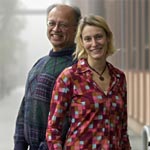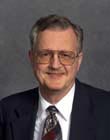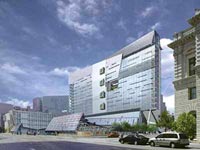Environmental Energy Technologies Division News

Research Highlights
Popular Mechanics Honors Gadgil, Galitsky for Darfur Stove

Popular Mechanics magazine has given a 2007 Breakthrough Award to Ashok Gadgil, Christina Galitsky, and the team that developed the energy efficient Darfur stove. The Environmental Energy Technologies Division researchers are among eight inventors and teams honored in the magazine's third annual awards.
Their citation for the stoves team includes a video of Gadgil and Galitsky using the stove to cook food, and describing how and why they developed it. Go here to watch a video of the two using the stove and describing how and why they developed it.
An additional story on low-tech solutions to global problems, featuring Gadgil, is available here.
Presidential Leadership Award

The Laboratories for the 21st Century (Labs21) program has been named one of five recipients of the Presidential Awards for Leadership in Federal Energy Management. Eight individuals have been named, including three from the Environmental Energy Technologies Division: Dale Sartor, Geoffrey Bell, and Paul Mathew. The winners attended a reception in Washington D.C. at the Omni Shoreham Hotel on Wednesday night, and received their awards at a special ceremony, as well as a tour of the White House, today.
The goal of the combined DOE and EPA Labs21 program is to improve energy efficiency and environmental performance of laboratories not only in the United Sates, but around the world.
Find out more about the Laboratories for the 21st Century program.
A tool kit for designing energy-efficient laboratories that was developed by Berkeley Lab researchers is available here.
Two Prestigious Awards for Professor John Newman

John Newman, a professor in the Department of Chemical Engineering on campus, was made an honorary member of the Electrochemical Society last week. Newman is the leader of the Batteries for Advanced Transportation Technologies Program in the Environmental Energy Technologies Division. No more than half of one percent of the active members can be an honorary member.
At the recent Electrochemical Society meeting in Washington D.C., it was also announced that Newman will receive the Vittorio de Nora Award, which is given for contributions to the field of electrochemical engineering and technology. Read more about the Newman group's research.
For more on the BATT program, see http://batt.lbl.gov
Home Energy Saver Website Gets Its Four Millionth Visit

The Home Energy website, which was developed by researchers in the Environmental Energy Technologies Division to guide homeowners in retrofitting homes for energy efficiency, recently had its four-millionth visit to the Home Energy Saver site. It took five years to reach the first million visits, 2.5 years for the second, 1.5 for the third, and just 1 year for the 4th.
Of the 5,600 users that have answered the user survey, 91% are homeowners or renters and about a third report having taken steps to save energy in their homes based on what they learned from the website. "If this is at all representative of the entire user population, we have indeed touched a great number of homes," says EETD's Evan Mills, the Home Energy Saver team leader.
http://homeenergysaver.lbl.gov
San Francisco Federal Building is One of the "Best Inventions of the Year"

Time Magazine has named the San Francisco Federal Building one of its 2007 "Best Inventions of the Year" winners in the architecture category. Its citation noted that the building is "really a machine for delivering sunlight and fresh air to the people who work there. Eighty-five percent of the work space gets natural sun, and windows manned by computer let in outside air to maintain the building's temperature with a minimum of air-conditioning."
The building's energy efficiency features were modeled by scientists in Berkeley Lab's Environmental Energy Technologies Division using EnergyPlus software, led by Philip Haves, leader of the Commercial Building Systems Group.
EETD's contributions to this design may be found under Technology Tranfer's Success Stories or the Berkeley Lab's Today Around Berkeley Lab.